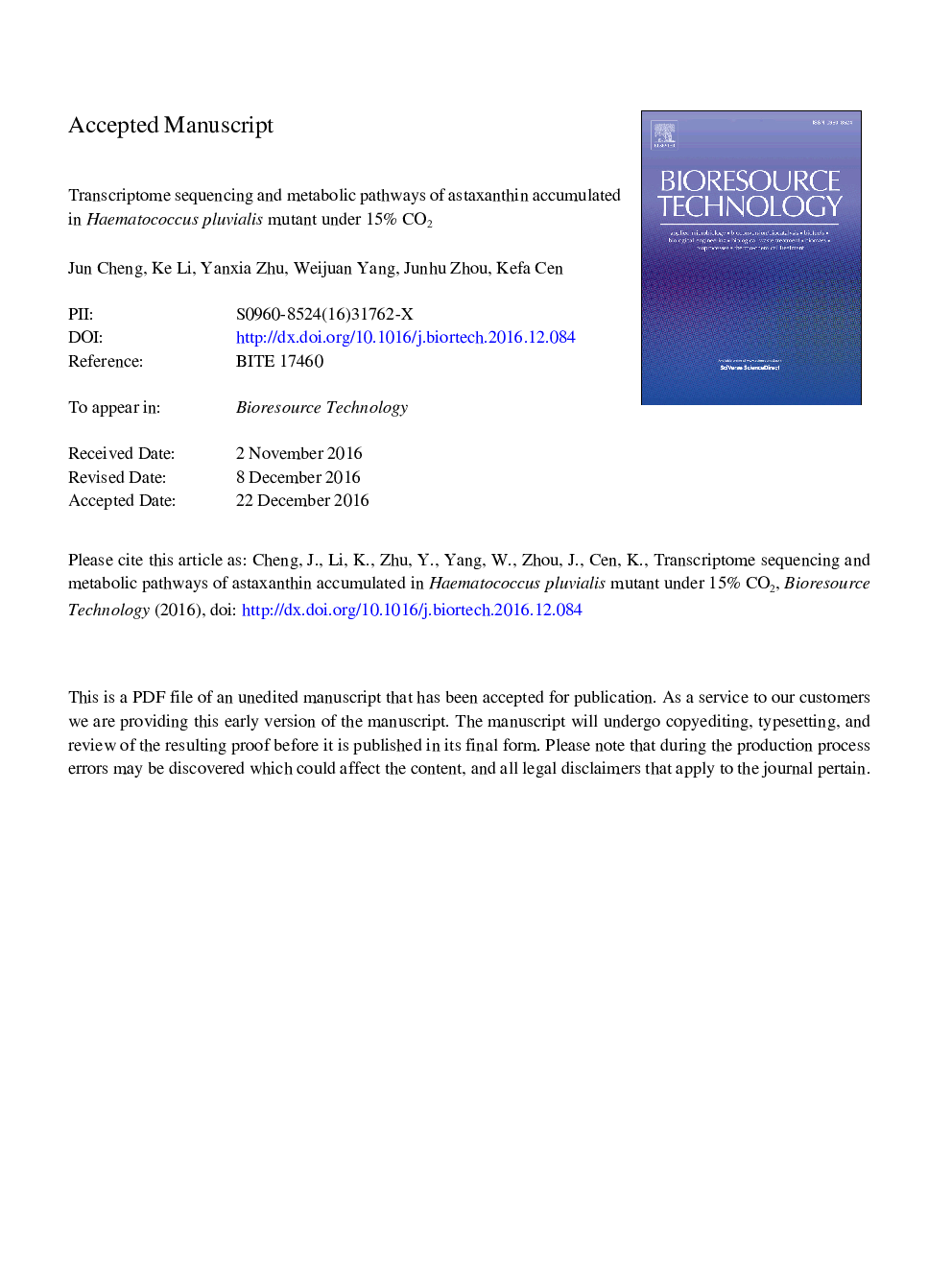| Article ID | Journal | Published Year | Pages | File Type |
|---|---|---|---|---|
| 4997740 | Bioresource Technology | 2017 | 18 Pages |
Abstract
Transcriptome sequencing and annotation was performed on Haematococcus pluvialis mutant red cells induced with high light under 15% CO2 to demonstrate why astaxanthin yield of the mutant was 1.7 times higher than that of a wild strain. It was found that 56% of 1947 differentially expressed genes were upregulated in mutant cells. Most significant differences were found in unigenes related to photosynthesis, carotenoid biosynthesis and fatty acid biosynthesis pathways. The pyruvate kinase increased by 3.5-fold in mutant cells. Thus, more pyruvate, which was beneficial to carotenoids and fatty acid biosynthesis, was generated. Phytoene synthase, zeta-carotene desaturase, lycopene beta-cyclase involved in β-carotene biosynthesis in mutant cells were upregulated by 10.4-, 4.4-, and 5.8-fold, respectively. Beta-carotene 3-hydroxylase catalyzing conversion of β-carotene into astaxanthin was upregulated by 18.4-fold. The fatty acid biosynthesis was promoted because of the upregulation of acetyl-CoA synthetase and acetyl-CoA carboxylase, thus increasing astaxanthin esterification and accumulation in mutant cells.
Related Topics
Physical Sciences and Engineering
Chemical Engineering
Process Chemistry and Technology
Authors
Jun Cheng, Ke Li, Yanxia Zhu, Weijuan Yang, Junhu Zhou, Kefa Cen,
